In pictures: Brazil's World Cup progress
- Published
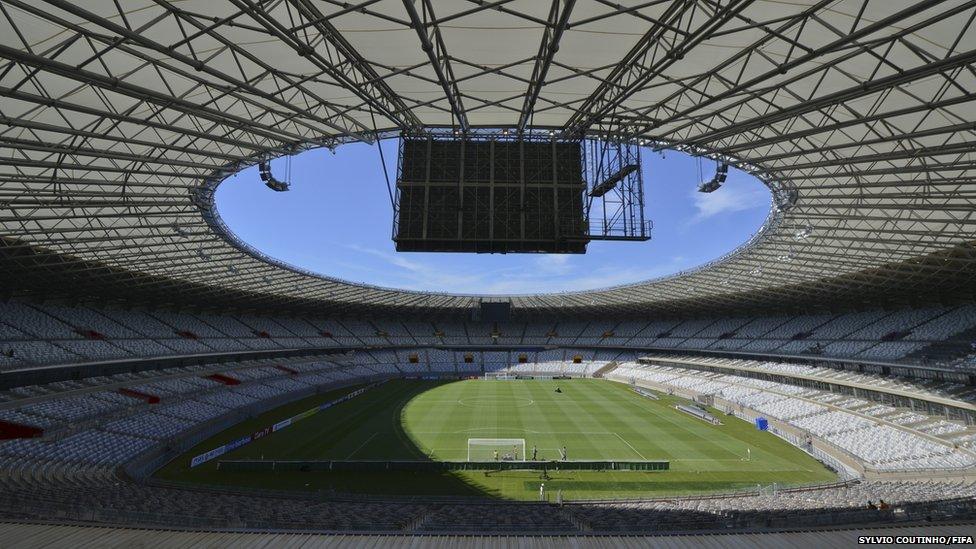
Twelve stadiums are being built or extensively renovated to host the 2014 World Cup in Brazil. Some have been completed, such as the Estadio Governador Magalhaes Pinto in Belo Horizonte, but others have been beset by delays.
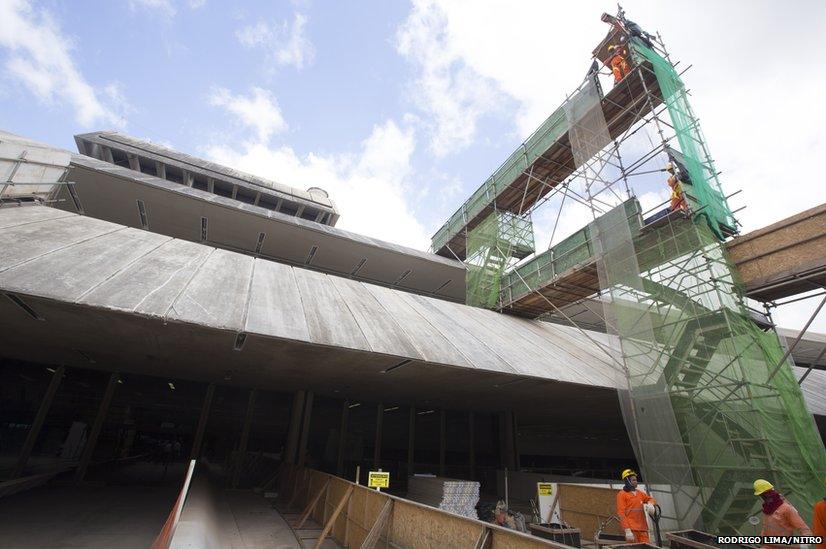
The deadline for construction work at Tancredo Neves International Airport in Belo Horizonte was initially set for December 2013 but had to be moved to April 2014 as only 22% of the initial part of the project has been completed. A second phase has begun but a third, which included the creation of a new terminal and parking lot, has been replaced by a smaller project.
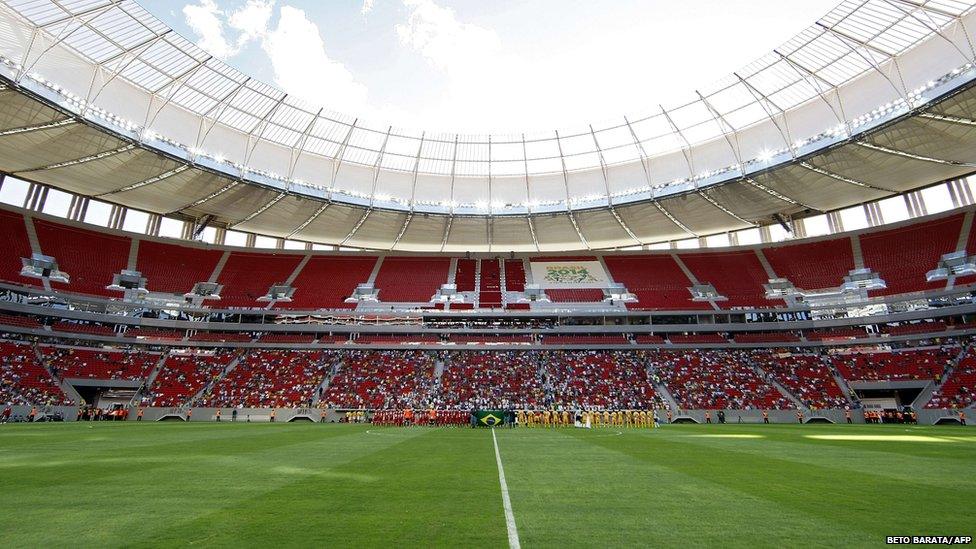
The Mane Garrincha Stadium in Brasilia reopened in May with an inaugural match between Brasilia and Brasiliense. According to the organisers, the event highlighted a need for "adjustments" to the infrastructure.
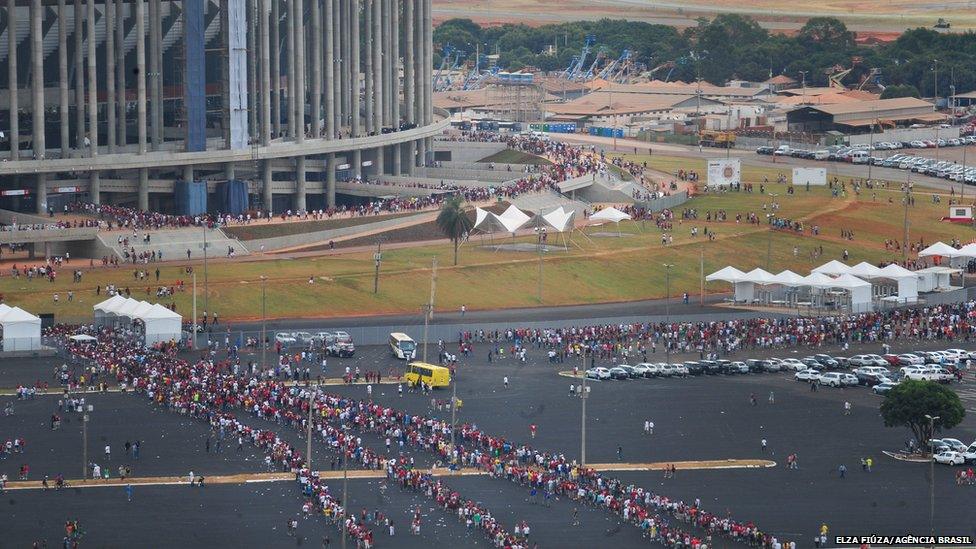
Supporters complained about long queues and a lack of signage around the venue in Brasilia. Some of the entrance security procedures were abandoned in the rush to get spectators inside. However, visitors did praise the interior security scheme, the cleanliness and the lack of queues to buy food and drinks.
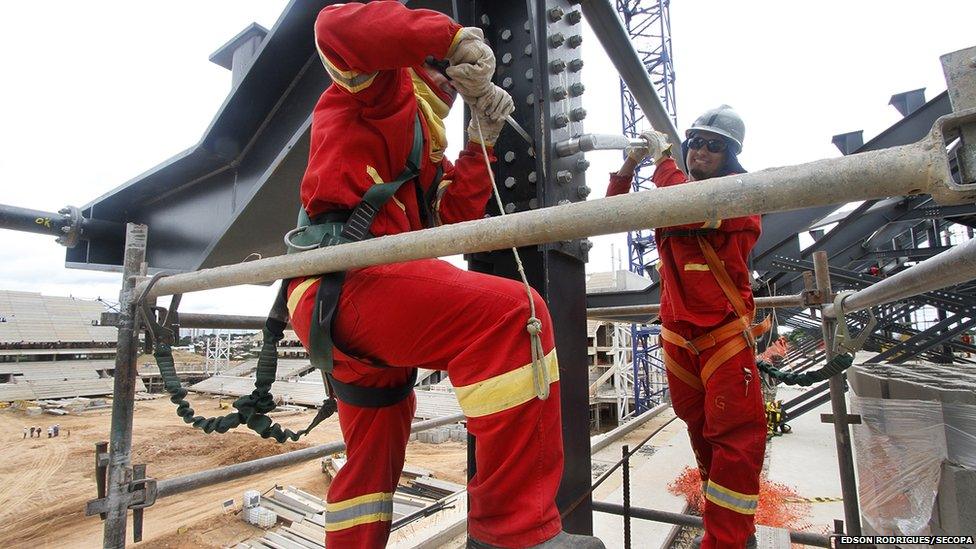
Arena Pantanal, the new stadium build in Cuiaba, has just reached three-quarters completion. However, the work is progressing at such a slow rate that it may only be ready after the World Cup has commenced.
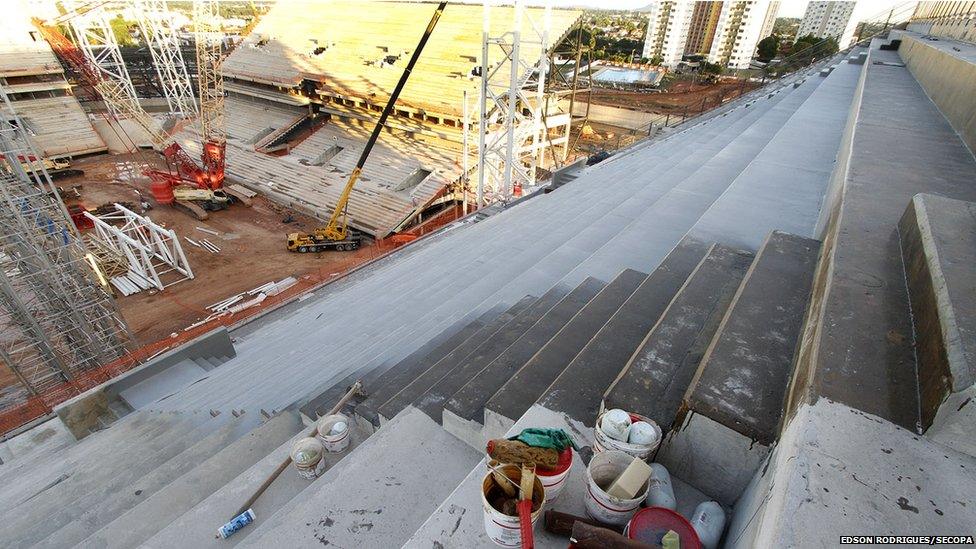
The government says the site of the Arena Pantanal, in Cuiaba will be finished by December 2013.
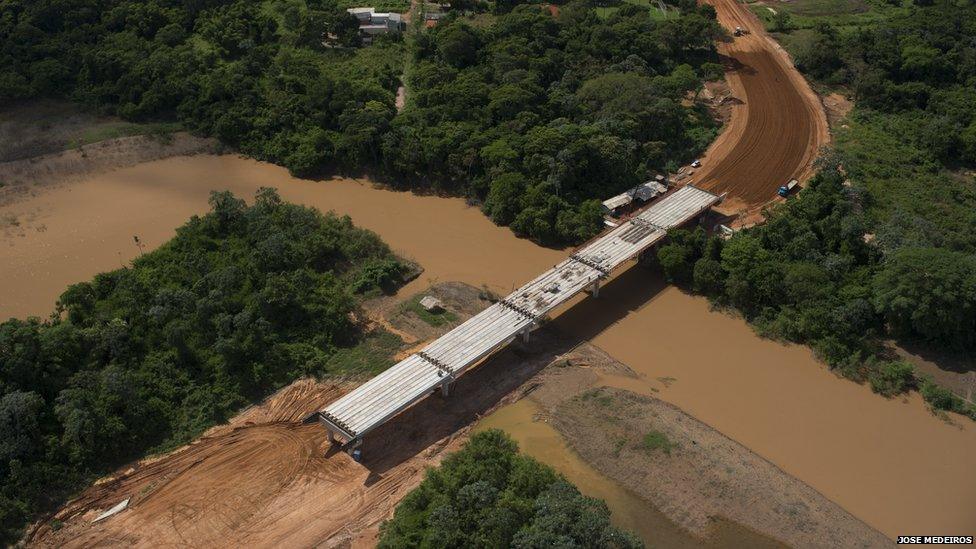
The construction of an overground rail system, which would connect the international airport to the centre of the city, has been delayed after several disputes, coming to a halt on two occasions. The construction company insists it will be delivered in time for the tournament, but observers suggest this is unlikely.
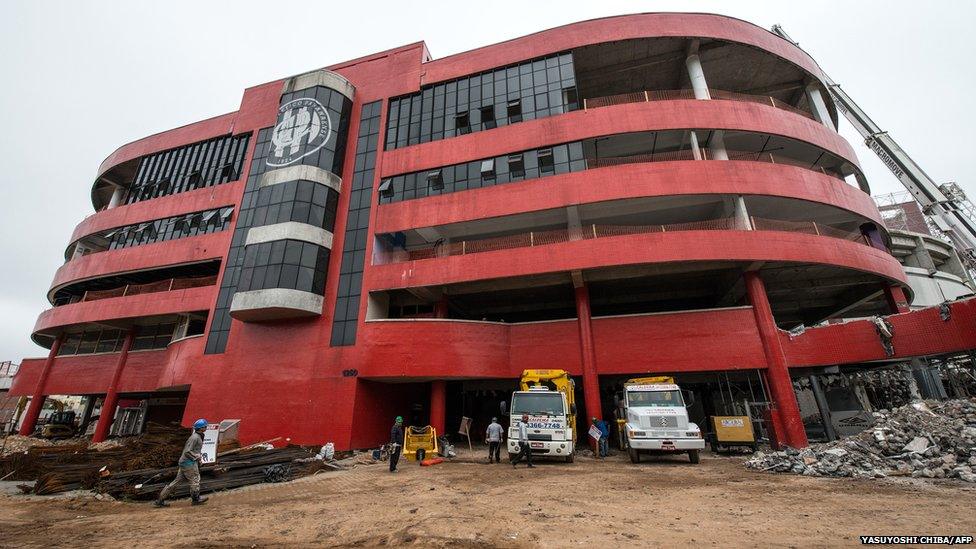
The renovation of the Arena da Baixada, Curitiba's main stadium, is making slow progress - a mere 68% of the planned work has been completed.
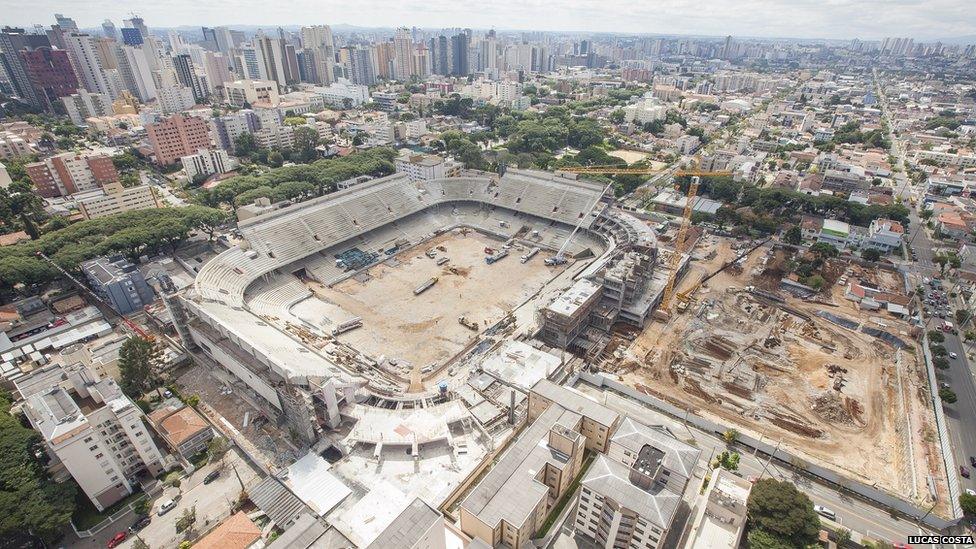
The rebuild of the Arena da Baixada was scheduled to be finished by July 2013, but the deadline was extended to December.
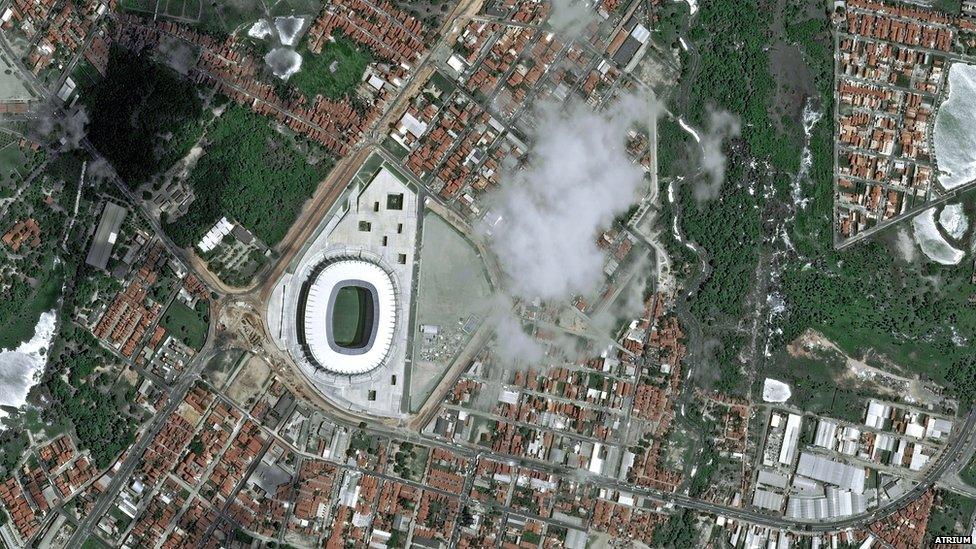
The Castelao Arena in Fortaleza was the first stadium to be completed. With a capacity of some 65,000, it was renovated at a cost of $250m (£155m). President Dilma Rousseff kicked a ball during the opening ceremony in December 2012.
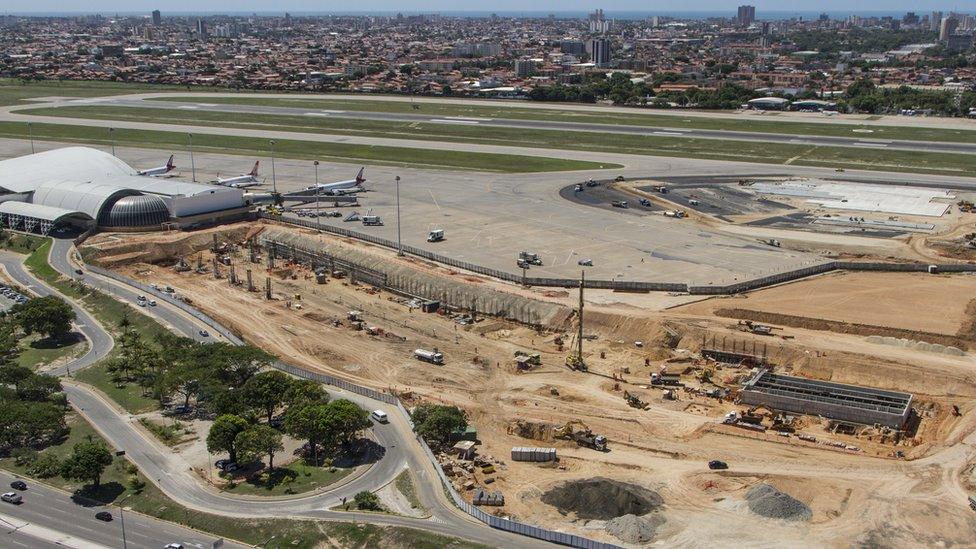
The local government’s next challenge is to complete six city transport projects and finish the renovation of Pinto Martins Airport by December.
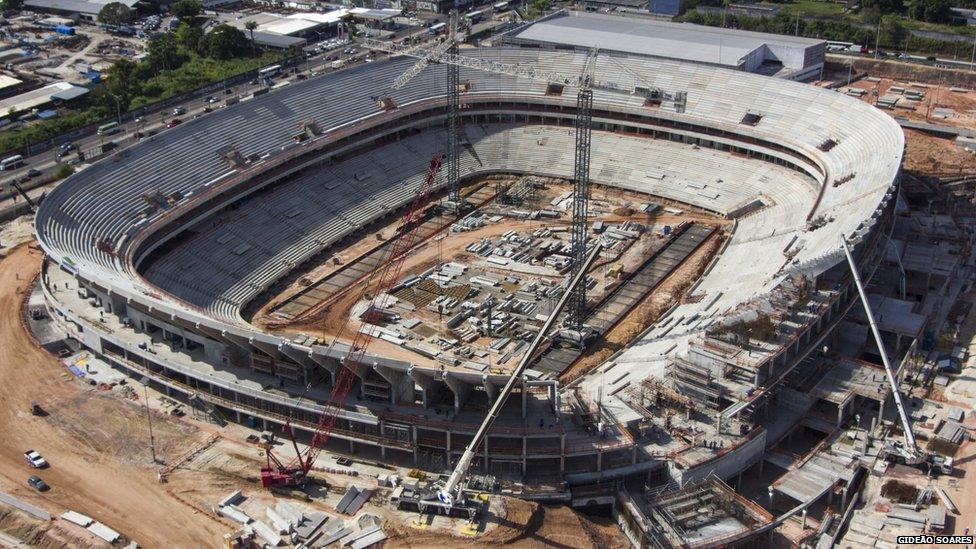
Arena da Amazonia, in Manaus, is behind schedule. After three years only 62% of the work has been done.
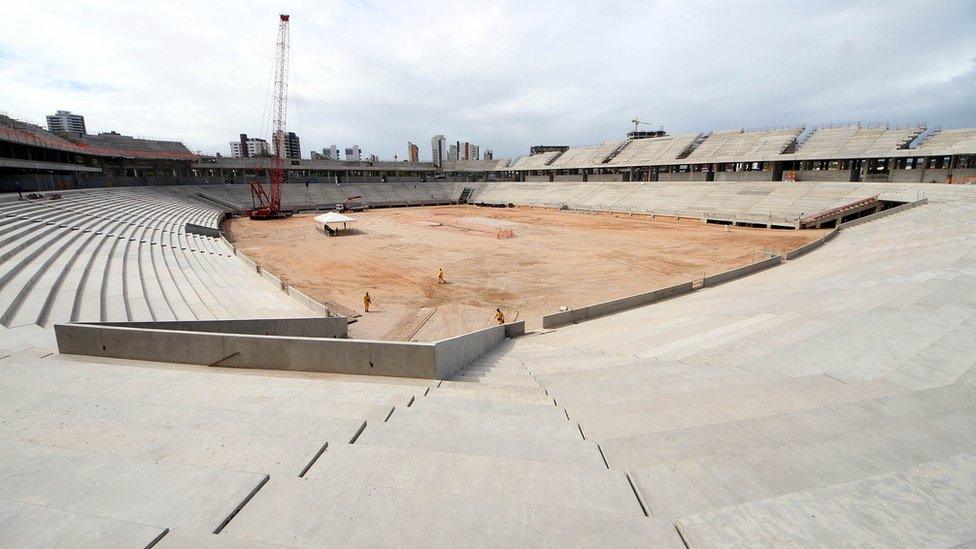
Work on Natal's stadium, Arena das Dunas, is progressing well.
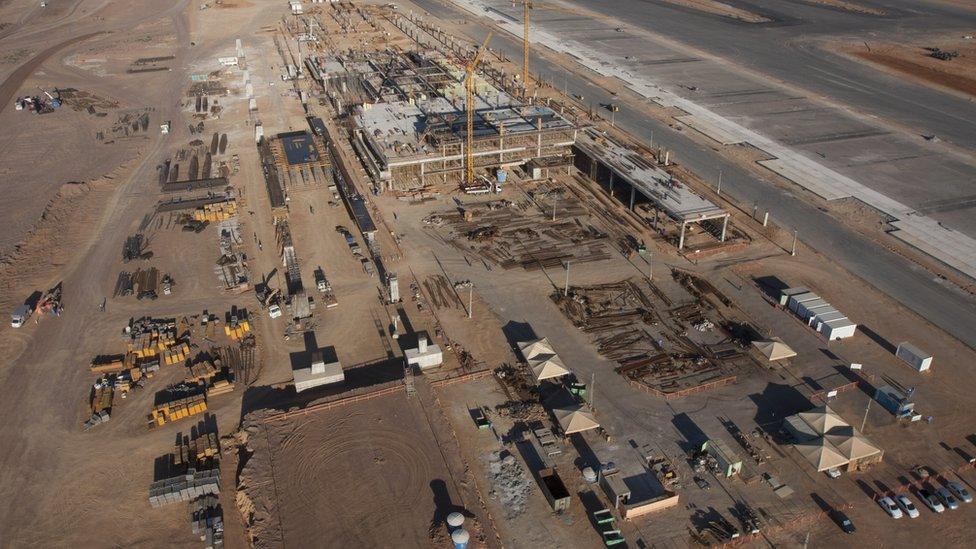
The Sao Goncalo do Amarante Airport, which is designed to be one of the biggest airports in the world, might not be ready in time for the beginning of the tournament.

After several delays caused by judicial disputes, strikes and protests, local authorities say all 10 of the construction projects in Porto Alegre, the southern capital of Brazil, will now be ready by May 2014.
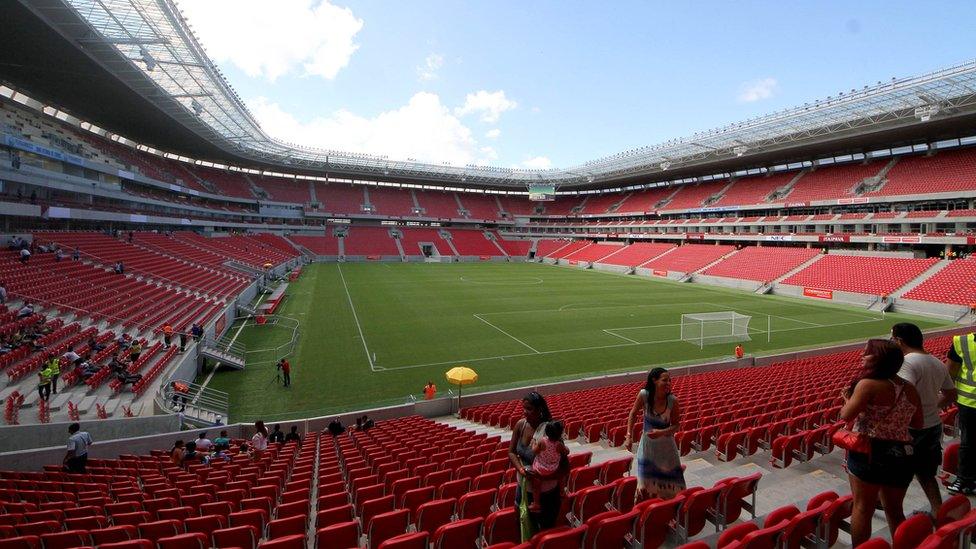
The Pernambuco Arena, in Recife, was opened in May 2013 and has already held one official game.
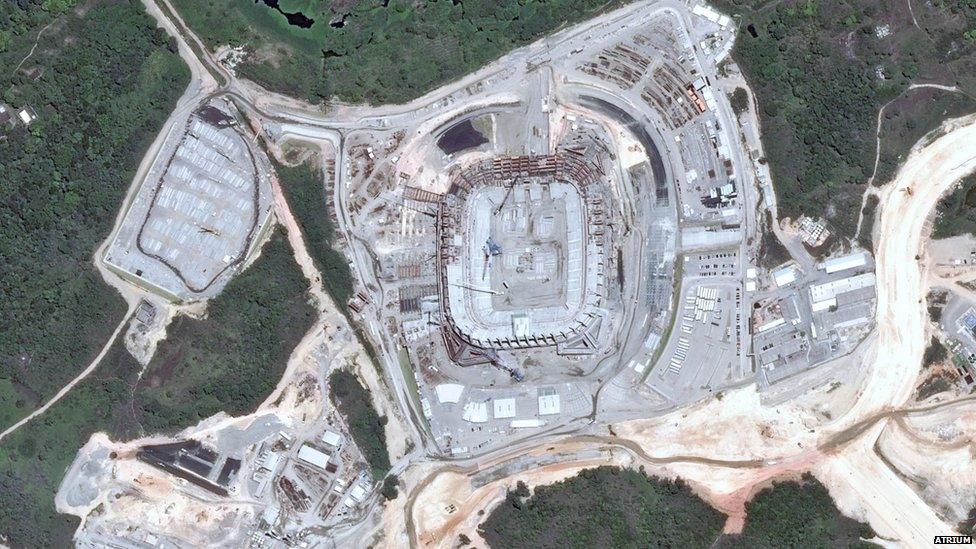
The construction of the stadium in Recife was one of the fastest in Brazil. But the new control tower in Gilberto Freyre International Airport, in Recife, supposed to be finished by December 2013, has yet to be started.

Rio's world-famous Maracana stadium reopened after nearly three years of renovation, following controversy over delays, costs and the future privatisation of the site. It was almost prevented from holding a friendly match between Brazil and England in June because construction work is still under way in avenues around the stadium.
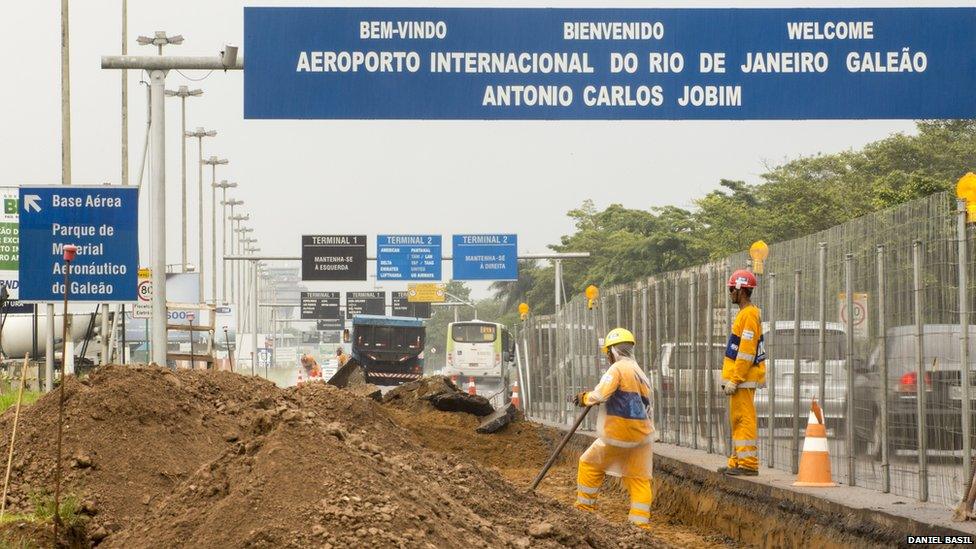
Rio de Janeiro will deliver only one out of its four Bus Rapid Transit (BRT) projects in time for the World Cup. The renovation works at the Antonio Carlos Jobim International Airport are scheduled to be finished by April 2014, just two months before the tournament.
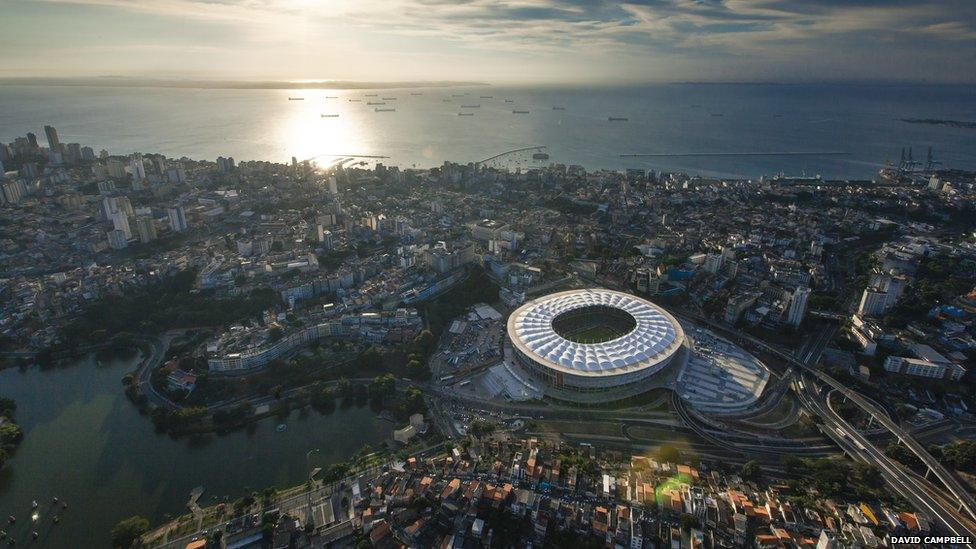
The Arena Fonte Nova in Salvador de Bahia, which reopened in April, was the third stadium to be completed. It has held matches but almost two months after the reopening ceremony, part of the roof collapsed following heavy rainfall.
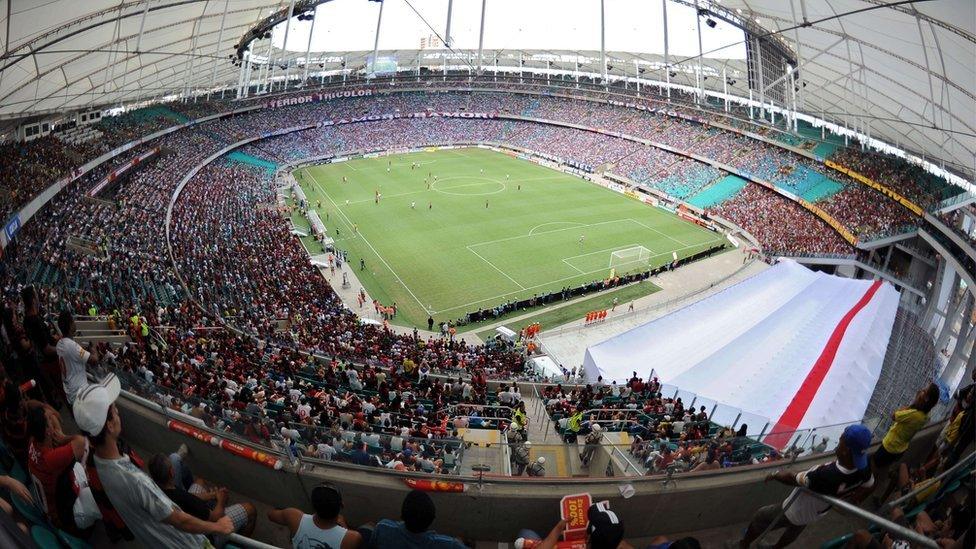
According to local engineers, the collapse in Salvador was due to a mistake made by the people in charge of protecting the roof during the rainy season.
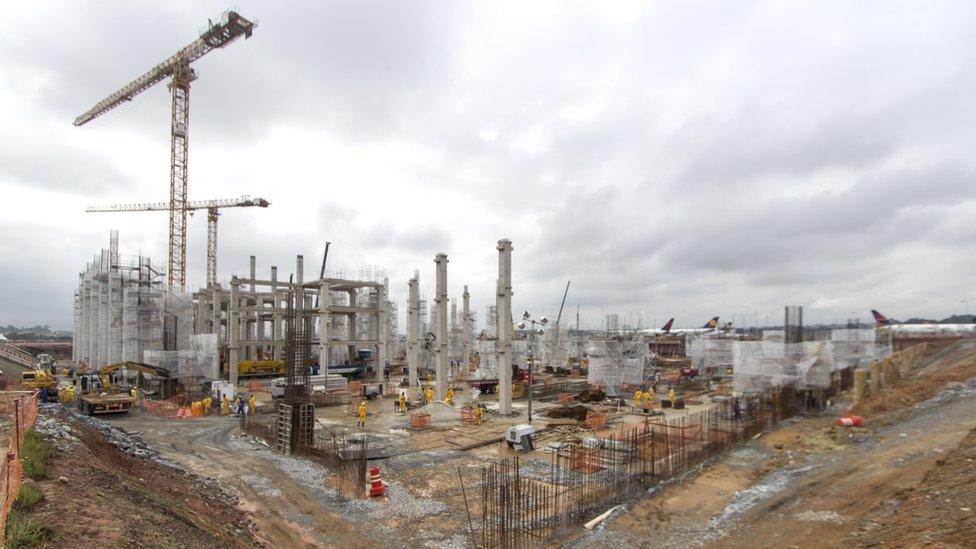
The construction work in Terminal 3 at Guarulhos International Airport, as well as the renovation of other terminals, is one of Sao Paulo’s most important projects. It should be completed one month before the finals.
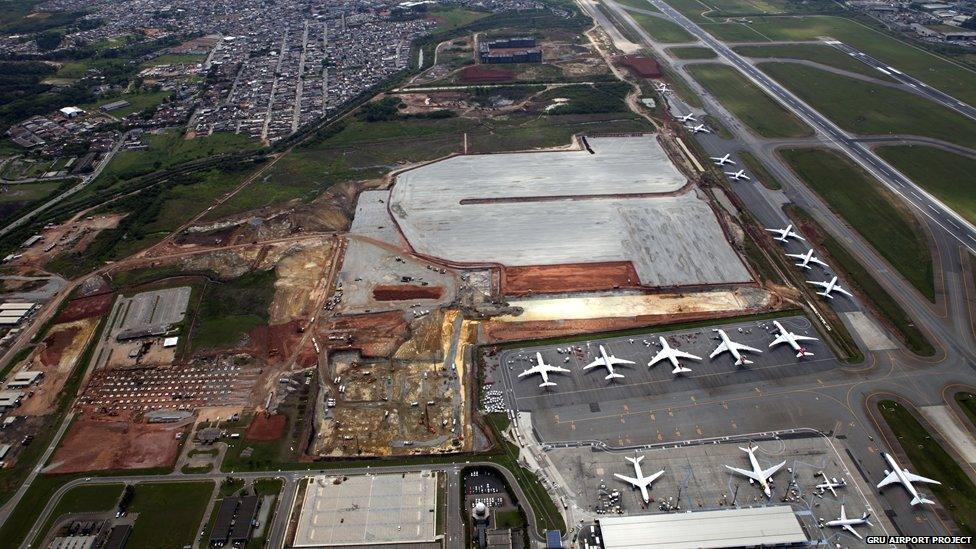
So far, only a new car park has been delivered and only 30% of the rest of the project is ready.
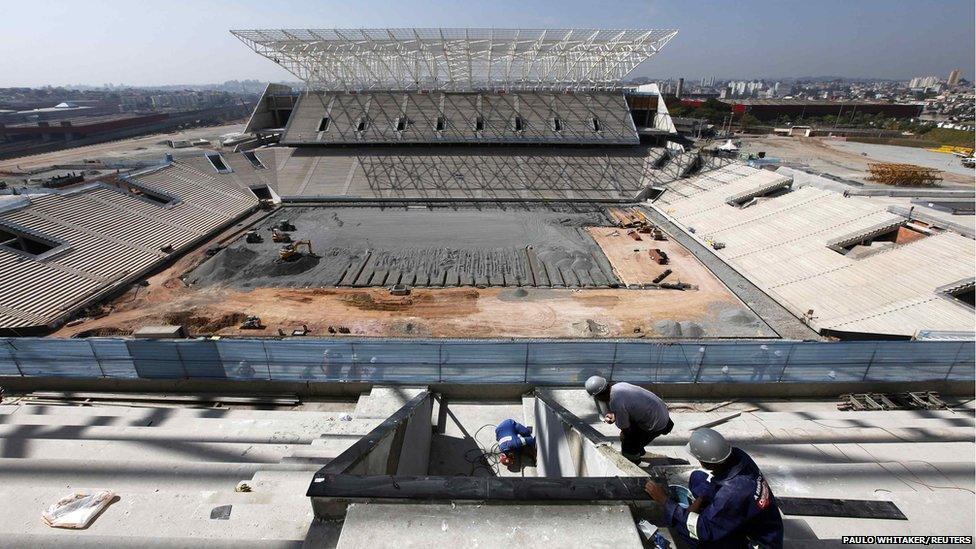
Sao Paulo may lose the right to stage any World Cup matches because of delays in building work, football's governing body Fifa has said. Arena Corinthians, the stadium where the World Cup will be opened, is being built from scratch.
- Attribution
- Published10 June 2013